Get a free trial of the Layer2 Cloud Connector after a short registration.
You learn how to configure your OneDrive and how to configure Layer2 Cloud Connector. We provider you with practical hints and known issues for a smooth start.
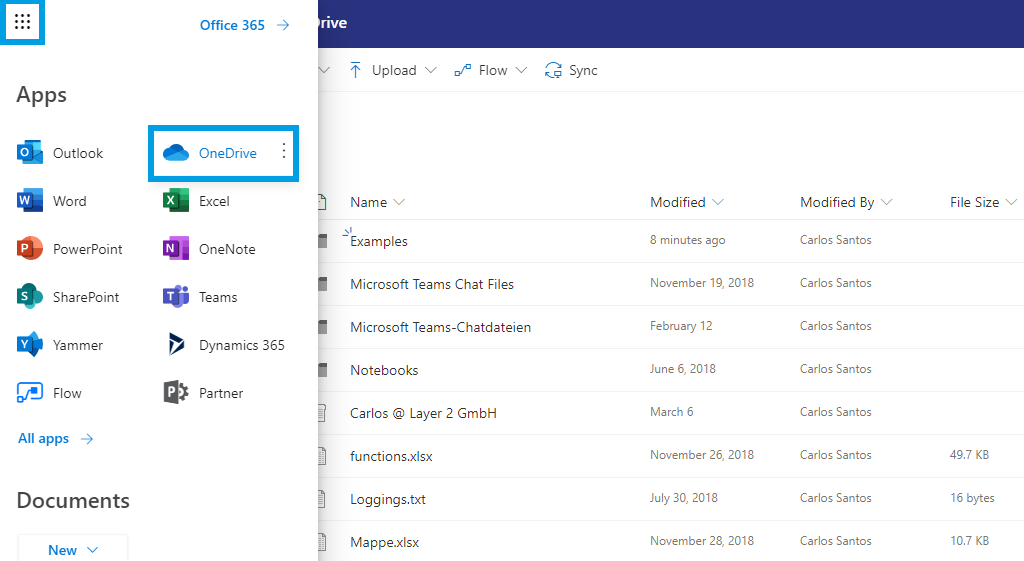
Open your SharePoint Online, navigate to the top left corner from the page and open the apps tab. Click on the OneDrive icon.
Click on the bottom left link to return to the classic OneDrive.
After this, you can copy the URL from your browser. It should be something like this:
https://company-my.sharepoint.com/personal/myAccount/Documents/Forms/All.aspx
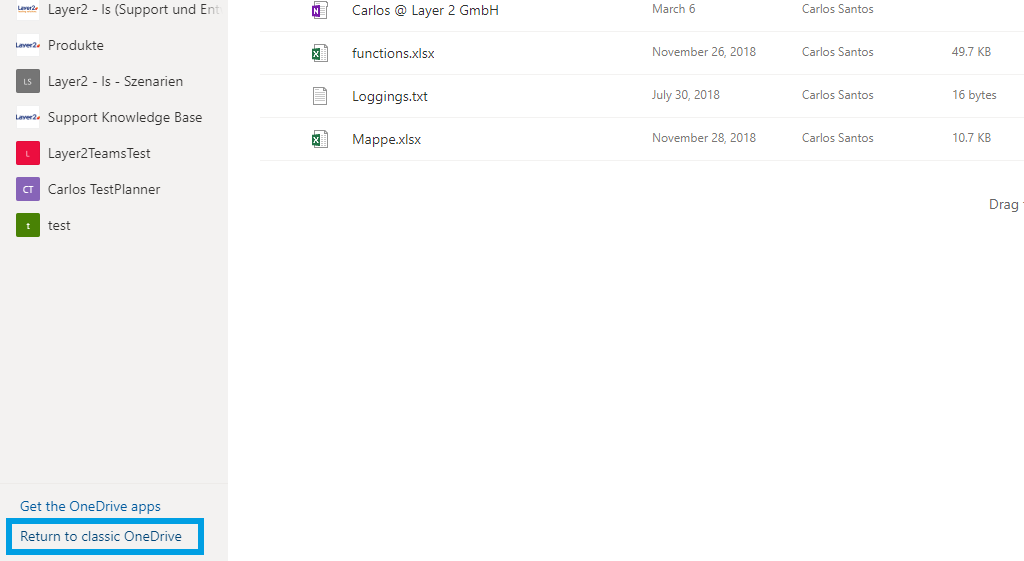
Create a new connection by using the Create New Connection option in the Actions pane (right-hand side). The new connection will appear at the bottom of the Connection Manager List (left-hand side). Click on your newly created connection to open the connection configuration settings.
Choose a meaningful name for your connection and replace the current "New Connection" Connection Title with it.
Connections to OneDrive can be bi-directional. An initial connection should always be uni-directional to assure that both data entities are identical before switching to bi-directional. Therefore, choose Left to Right as Direction. You can change this setting after your initial synchronization finished successfully.
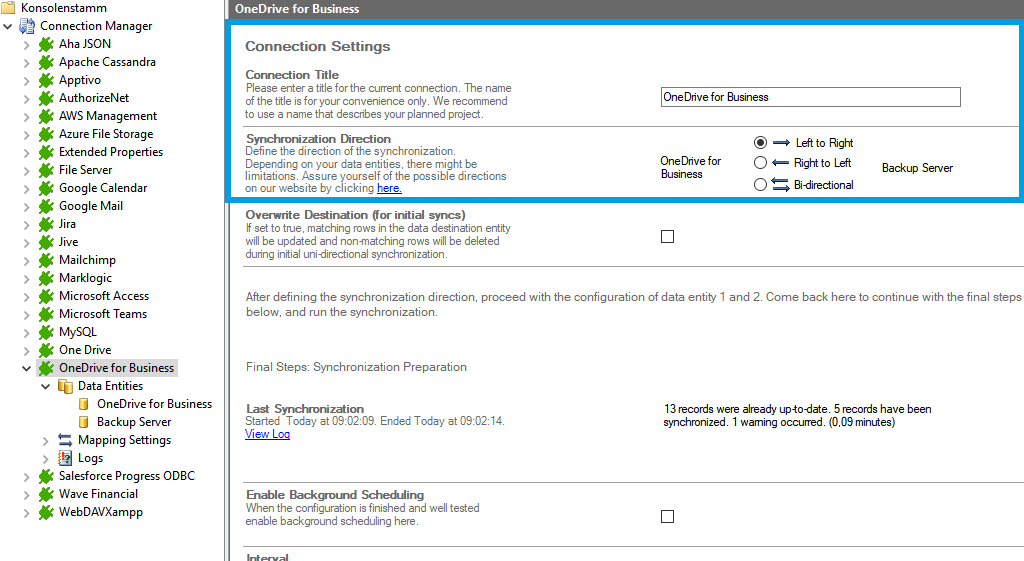
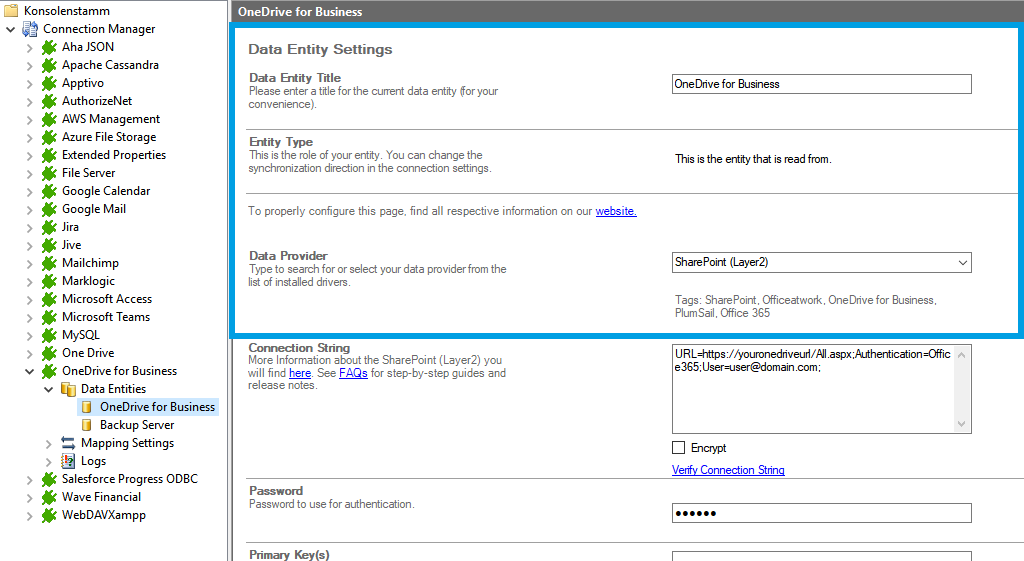
We will now set up our Data Entities. Go to the data entity “Data Entity 1” to open the configuration settings.
Choose a Data Entity Title. It is recommended to give your entities meaningful names to maintain an overview when you decide to set up multiple connections.
Select the Data Provider for SharePoint from the data provider list. You can search for SharePoint by typing into the selection box.
For the Connection String, we need the in step 1 mentioned information. You can copy the connection string at the right and adjust it to match your gathered information.
Use the Verify Connection String option to evaluate if the provided connection string is valid.
Type your password in the designed field.
URL="https://urlfromstep1;Authentication=Office365;User=user@domain.com;
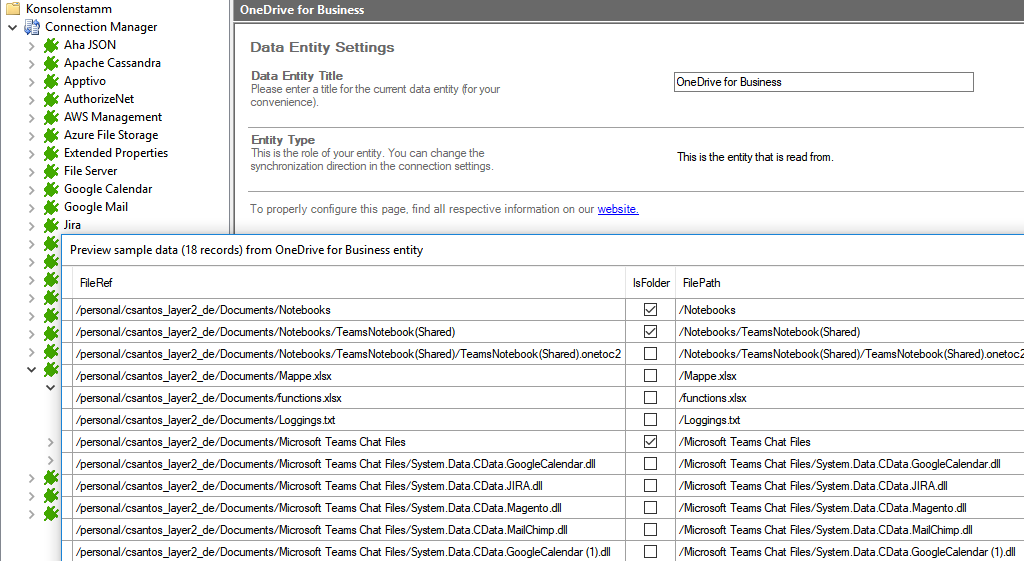
To check if all necessary columns are received, you can use the Preview Data option on the right-hand pane which will provide you with a pop-up window showing your sample data from your OneDrive entity.
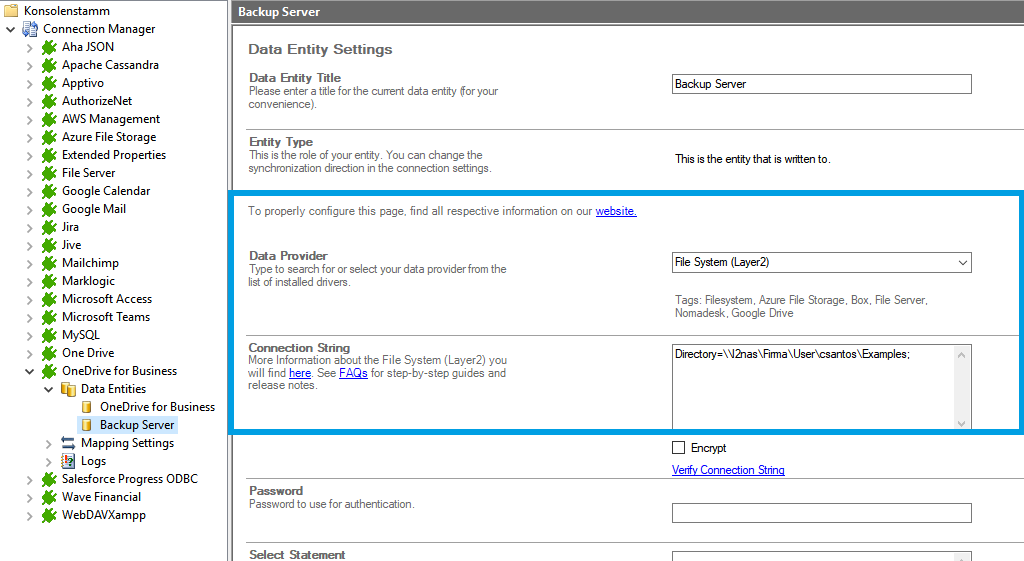
We are going to send the data to a NAS-system. You need the address to a folder in the NAS-server you want to send the data to. You can get this information from your network administrator. This address would be like this:
\\l2nas\Firma\User\csantos\Examples
Use the left-hand pane to switch to the data entity "Data Entity 2". We will be using the File System Provider for this setup.
You can copy the below Connection String which contains the minimum of required properties to connect to your folder on the NAS-server.
Directory=\\l2nas\Firma\User\csantos\Examples;
Next, we will configure our mapping settings. Click on the Mappings option on the left-hand pane. If your fields from SharePoint are named identical to the fields from your source system, the Enable Auto Mapping option will match those columns. Disabling this option allows you to match your columns as needed. We enabled auto-mapping in our setup. Save your changes by using the right-hand pane option Save Changes.
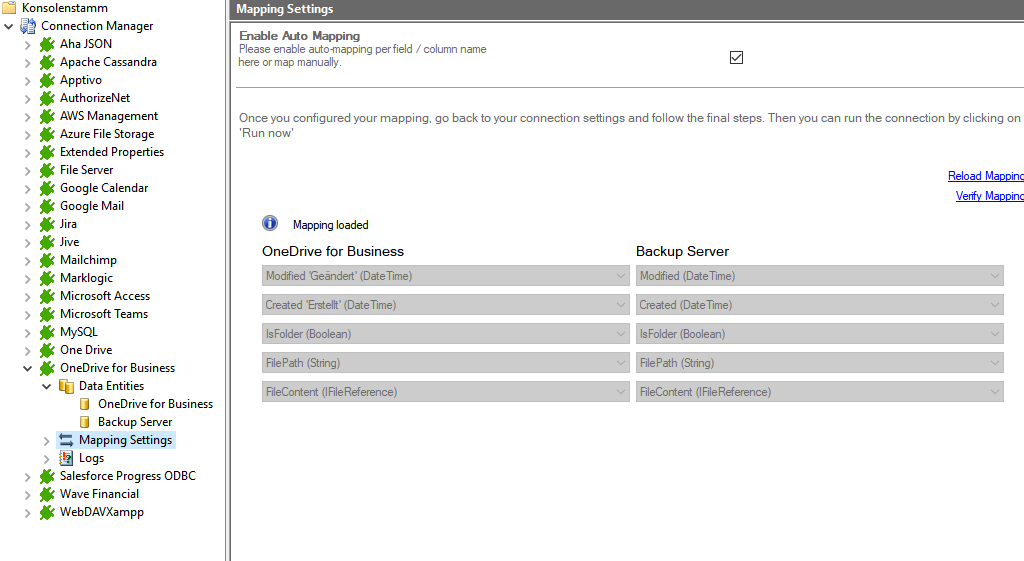
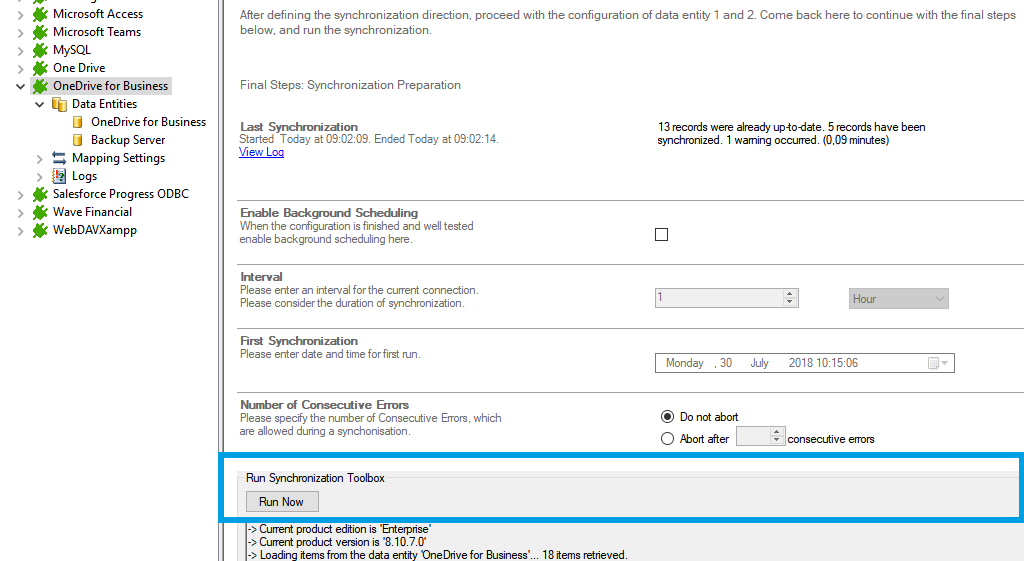
To run your connection switch back to the main connection configuration node and use the Run Now Button located on the bottom of the setup page. The Run Synchronization Toolbox will also display the synchronization process.
This is a data preview of the information we have accessed in our source entity.
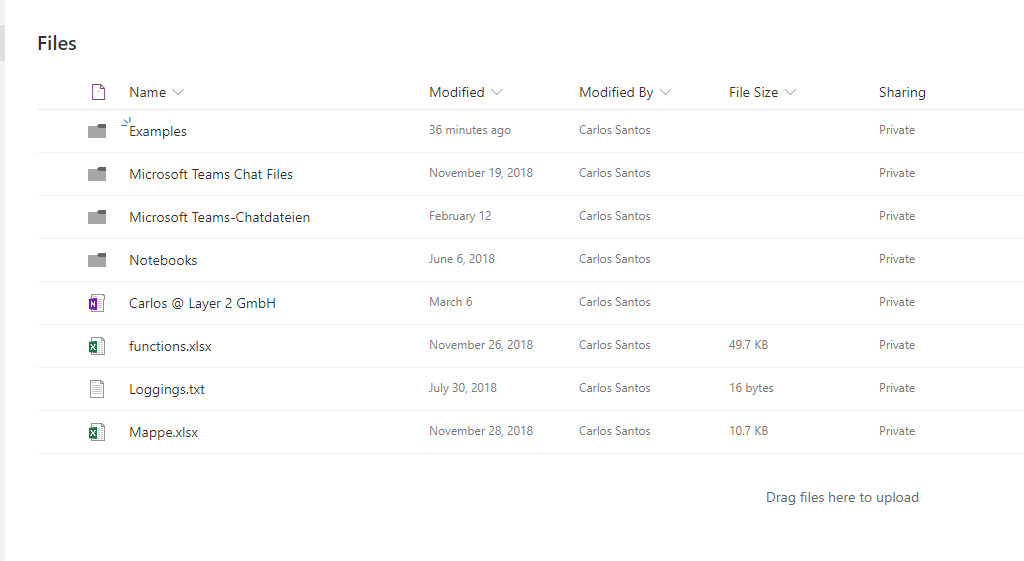
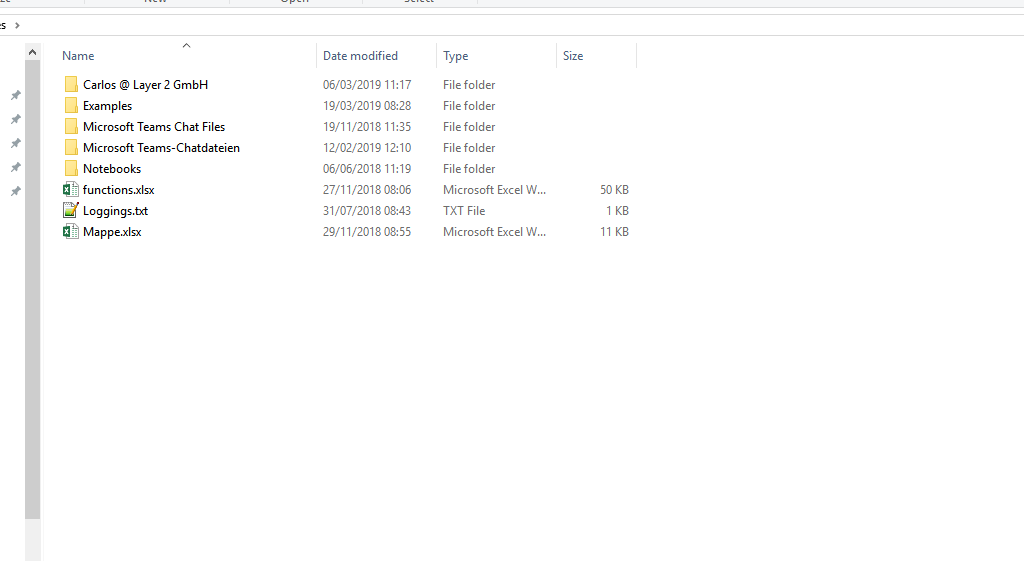
This will be the result in our NAS server after our initial successful synchronization.
If you want to use a bi-directional syncronization, you can now switch your connection directon after our first initial synchronization run finished successfully.
We also recommend to choose a Conflict Resolution that matches your enviroments needs. You can find out more about the different conflict resolutions in our Layer2 Cloud Connector User Documentation.
Are you ready to unlock your full potential and integrate your data for seemless collaboration?
Connection direction
As far as tested, this connection supports uni-directional as well as bi-directional synchronizations. After adjusting the direction to bi-directional, you should check your Mappings settings again because some systems might include read-only columns that cannot be mapped directly. We also recommend to choose a Conflict Resolution that matches your environments needs. You can find out more about the different conflict resolutions in our Layer2 Cloud Connector User Documentation.
Other libraries or lists
If you want to use another library in your OneDrive, you can get the correct URL by navigating to the location, opening the List/Library Settings and looking at the "Web Address:" given at the top of the settings page. That is the URL you will need for the connection string to this location. If you are having trouble finding other content in your OneDrive location, you can click on the Cog-like icon near your account name in the upper-right corner and select Site settings from the list of options. Then under "Site Administration", select Site libraries and lists, which will show all items currently in the OneDrive as well as allow you to create new ones. The site content may also be listed in the left column of that page, if your UI configuration allows it.
SharePoint list attachments
SharePoint list attachments are not managed at this time and are not supported.
File size
OneDrive fo Business supports files up to 2GB. Larger files will be rejected. (See SharePoint Online software boundaries and Limits for more information.)
Final note
While this guide is current and functional at the time of its creation, future updates may slightly alter the steps. If you encounter any changes, feel free to reach out to our support team for assistance.